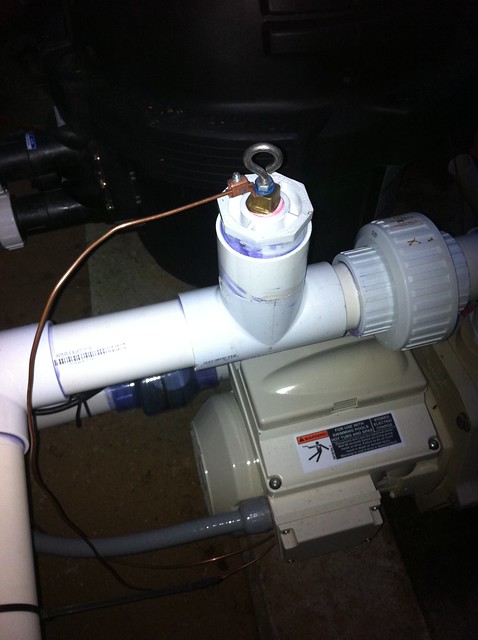I know these are subject to considerable debate here but I know the addition of one can't hurt. I figured if I could build one for a reasonable price, why not?
The commercial ones are $60 to $80 which seems ridiculous to me. The marine industry uses anodes on everything so I looked for something suitable there and found what is called a "pencil anode" which has an npt threaded cap and is for the cooling system. http://www.boatzincs.com/engine-sizes.html I picked up an E5 for $9 at a local marine supply place. I tapped the top for a 1/4 inch bolt and added a lug. I put a tee in the output from the pump with a 2 inch x 3/4 inch bushing and threaded in the anode. I connected it to the bonding grid and that was it. I'll need to check on it periodically to see if it is getting used up.

The commercial ones are $60 to $80 which seems ridiculous to me. The marine industry uses anodes on everything so I looked for something suitable there and found what is called a "pencil anode" which has an npt threaded cap and is for the cooling system. http://www.boatzincs.com/engine-sizes.html I picked up an E5 for $9 at a local marine supply place. I tapped the top for a 1/4 inch bolt and added a lug. I put a tee in the output from the pump with a 2 inch x 3/4 inch bushing and threaded in the anode. I connected it to the bonding grid and that was it. I'll need to check on it periodically to see if it is getting used up.


